Miss Israel 2005, actress, and model Gal Gadot--the big screen incarnation of Wonder Woman--turns 36 today. In celebration, here are a few photos of her!
Friday, April 30, 2021
Thursday, April 29, 2021
In Observance of International Dance Day...
... we bring you a line-up of ballerinas from different nations!
Valeska Miller of the United States of America...
... Yvonne Craig of the United States...
... Leslie Caron of France...
... Maria Tallchief of the United States...
We WOULD have featured last year's International Dance Day's star Brigitte Bardot (of France), but she was still getting ready by the time we had to make this post.
You can also see one of this year's featured dancers, Valeska Miller, in the brand-new horror short film, "The Ballerina", at Terror Titans. Click here!
The Avengers: The Hour that Never Was
The Hour that Never Was (1965)
Starring: Patrick Macnee, Diana Rigg, Roy Kinnear, and Dudley Foster
Starring: Patrick Macnee, Diana Rigg, Roy Kinnear, and Dudley Foster
Director: Gerry O'Hara
Rating: Nine of Ten Stars
A car accident causes Steed and Mrs. Peel (Macnee and Rigg) to arrive late to a reception and party behind held at an air force base that is being decommissioned. They find the facility completely deserted and all clocks stopped at the exact moment of their car crash.
"The Hour That Never Was" is one of the best episodes of the ones from the 1965/66 season. Between the expansion of John Steed's background with details about his WW2 activities (including the fact that he played fast-and-loose with the rules even then); some great interplay between Steed and Peel that both underscores their easy-going friendship, their skills as agents, and their ability to be ruthless when called for; and a mystery that will keep you guessing as to what has happened to the staff of the airbase--because just as you think you may have figured it out, the mid-episode twist will put you right back to Square One.
"The Hour That Never Was" also benefits from some creative camera-work that emphasizes the creepiness of the deserted airbase during the first half of the episode, and the disorientation felt by Steed when he suddenly finds the base populated again... except now Peel has gone missing.
This is one of the spookiest episodes of the series, because the mystery keeps turning inside out and then turning again. It's clear that there are clearly some mundane threat at play (a sniper with a rifle kills the only other living human being that Steed and Peel lay eyes on after arriving at the base) the supernatural or weird science threat that appears to have first made everyone on the base vanish and then appears to have distorted time is the far greater danger... and it's one that remains mysterious until the episode reaches its conclusion.
The only weak part of "The House Than Never Was" is the fight between our heroes and the villains at the end. It's a little too goofy, even by "The Avengers" standards. But this is more than made up for the excellent execution of the story and the many little touches that make Steed and Peel seem more three-dimensional and human than they have in any previous episodes. (Steed's joy at the prospect of reuniting with old friends is something every adult ca relate to; and the fact that Peel has a favorite pair of boots she keeps in the car just in case she ends up having to walk are among my favorites. In fact, I think this episode may be the first time I ever had the sense that a female character in a show had what felt like a realistic wardrobe... because it dawned on me that Emma Peel often wore the same hat or shoes or jacket with different pants or blouses instead of either the exact same outfit or a completely different outfit every week. I may think those striped boots or that beanie that looks like a target that she is so fond of are goofy-looking, but I also felt they brought a bit of realism to the glamorous, comic-book universe that Peel and Steed live in.)
Wednesday, April 28, 2021
Tuesday, April 27, 2021
You should witness 'Shep's Race with Death'
Shep's Race with Death (1914)
Starring: Shep the Dog, Marion Fairbanks & Madeline Fairbanks [as the Thanhouser Twins], J.S. Murray, M. Whitcove, and Marie Rainford
Director: John Harvey
Rating: Seven of Ten Stars
Starring: Shep the Dog, Marion Fairbanks & Madeline Fairbanks [as the Thanhouser Twins], J.S. Murray, M. Whitcove, and Marie Rainford
Director: John Harvey
Rating: Seven of Ten Stars
Although they are identical twins (Fairbanks and Fairbanks), who have similar personalities and ways of behaving, their grandmother (Whitcove) hates one and loves the other... and she's not shy about either emotion. When the beloved sister lashes out at the grandmother for the mistreatment of her sister, the grandmother convinces their mother (Rainford) to separate the sisters by leaving the hated one with the father (Murray) while leaving with the beloved one away to live at their grandmother's house. But the separation of the sisters and the broken family is only the beginning of the misery and danger.
Shep was a Rough Collie who helped set the mold for heroic dogs like Rin-Tin-Tin and Lassie. He headlined 14 films from 1912 to 1914, and in "Shep's Race with Death", he shares the screen with the "Thanhouser Twins", a pair of girls whose brief film career overlapped with his. The twins were actually Madeline Fairbanks and Marion Fairbanks; their joint screen-name was derived from the production company for which the majority of their films were made. Born in 1900, they appeared in roughly 45 short films between the years of 1912 and 1916. They also had successful stage careers before, during, and after their time in movies, performing both in musical theatre, variety shows, and plays.
As for "Shep's Race with Death", the girls and the dog make great onscreen companions. The affection they show for Shep, and visa-versa, seems genuine, and the scenes where they are playing with each other or otherwise interacting are some of the best parts of the film. (As it should be, since Shep has top billing...)
As for "Shep's Race with Death", the girls and the dog make great onscreen companions. The affection they show for Shep, and visa-versa, seems genuine, and the scenes where they are playing with each other or otherwise interacting are some of the best parts of the film. (As it should be, since Shep has top billing...)
Another strong suit of the film is that it wastes no time getting started, keeps a breakneck pace throughout, and never gives the viewer much of a chance to notice the overacting that comes with the melodramatic genre to which this film belongs. Despite the swift pace of the film, we're even given a denouement that wraps up the film perfectly while showing off the strength of its stars performing together.
All that said, the film's breakneck pace also works against it. It's confusing that the parents of the twins just fold without any objections or questions when the nasty mother-in-law insists on breaking up the household and making the twin she likes and the wife (her daughter) to come live with her. Perhaps this, one of the greatest intertitles ever made, and which amused me to no end, is so true that they didn't dare stand up to her?
Could the mother-in-law have brought more doom and misery to the household beyond breaking it up? Is that why the parents fold so easily? The film doesn't take the time to explain this, so maybe it's not something that would have crossed the minds of 1914 viewers, but it's a point that bothered me. It also bothers me that there's no resolution of the plotline involving the nasty mother-in-law. She just sort of vanishes from the story and we never see what reaction she might have to the family reuniting happily after the "race with death" of the title. Maybe, before racing with death, Shep pushed the evil mother-in-law off a cliff, or maybe the Dad or the Twins got together and somehow disposed of her?
Whatever the case, it's something the film doesn't deal with, and I think it might have been stronger if it had. (Sometimes, with films of this age, all we have are fragments, so it's possible there was originally a scene or two that dealt with the mother-in-law later in the film. I find this to be unlikely, since the running time of the version I viewed matches all the running-times listed for this film I've been able to find. I think, in this case, the mother-in-law vanishing is just bad storytelling.
Despite its flaws, I think that, if you enjoy silent movies, you'll find the quarter of an hour it'll take you to watch "Shep's Race With Death" to be time well spent. Click below and sit back. (And if you feel so inclined, share YOUR opinion of the film in a comment to this post.)
Monday, April 26, 2021
Musical Monday with Wale
Rappers Wale and Gunna are here on this Musical Monday, with a pair of very lovely ladies. They're performing "Flawed"--a rather sad piece about relationships with some strong melodic hooks--while you get to watch the very visually engaging video that was made to promote the track.
Flawed (2020)
Starring: Wale and Gunna
Directors: Joseph Desrosiers and Melissa Forde
Rating: Seven of Ten Stars
Sunday, April 25, 2021
An amusing flick with a botched ending
Hook, Line, and Sinker (1930)
Starring: Bert Wheeler, Robert Woolsey, Dorothy Lee, George Marion, Natalie Moorehead, Jobyna Howland, and Ralf Harolde, and Hugh Herbert
Director: Edward Cline
Rating: Six of Ten Stars
A pair of con artists (Wheeler and Woolsey) go straight to help a young heiress (Lee) to turn a rundown hotel into a successful destination for the rich and famous so she can gain independence and avoid an arranged marriage. Their efforts attract the attention of numerous gangsters who want rob the hotel's guests, including a gang operating out of the hotel's secret basement that just happens to be led by the heiress's would-be husband (Harolde).
Starring: Bert Wheeler, Robert Woolsey, Dorothy Lee, George Marion, Natalie Moorehead, Jobyna Howland, and Ralf Harolde, and Hugh Herbert
Director: Edward Cline
Rating: Six of Ten Stars
A pair of con artists (Wheeler and Woolsey) go straight to help a young heiress (Lee) to turn a rundown hotel into a successful destination for the rich and famous so she can gain independence and avoid an arranged marriage. Their efforts attract the attention of numerous gangsters who want rob the hotel's guests, including a gang operating out of the hotel's secret basement that just happens to be led by the heiress's would-be husband (Harolde).
"Hook, Line, and Sinker" was a box office smash in 1930--it was the top-grossing film for RKO, and may have been the top-grossing film, period. Knowing that, and watching the film in 2021, is a reminder of how tastes change over the decades. I like old movies (as clearly demonstrated by the fact this blog even exists), but I still had a hard time seeing how this film could have been so popular. It's got strong points, and it's fairly funny, but I don't see how it could have set the box office on fire the way it did.
In its favor, it's got plenty of straight-up bawdy humor and even more double entendres. There isn't any one particular bit that sticks out, but the non-stop stream of banter and humorous situations keeps the film moving along at a fast pace. It also manages to make the two clownish heroes the center of all romantic subplots, completely eschewing the usual "serious" couple that normally carries at least some of those; instead, true love seems to reform the scoundrels here, so they get to clown around and have a romantic happy ending. It's a nice change of pace that no time is wasted on a bland, uninteresting couple.
Unfortunately, this otherwise entertaining movie is dragged by an ending that goes on for entirely too long. Without spoiling too much, the final portion of the film is devoted to a shoot-out between the various gangs trying to rob the hotel safe, with our heroes and their lady friends caught in the middle and trying to fight back. It's the sort of chaotic free-for-all that's been the hallmark of action comedies for decades, but here it goes on for too long. The jokes are funny, but the action feels padded and a climax that was undoubtedly conceived to be equal parts exciting and funny, but it meanders instead of builds in intensity and ends up being tedious and should have ended well before a conclusion is forced with a splash of deus ex machina. (The film does give us the nicety of a little dénouement, but it doesn't make up for the flabby climax.)
Unfortunately, this otherwise entertaining movie is dragged by an ending that goes on for entirely too long. Without spoiling too much, the final portion of the film is devoted to a shoot-out between the various gangs trying to rob the hotel safe, with our heroes and their lady friends caught in the middle and trying to fight back. It's the sort of chaotic free-for-all that's been the hallmark of action comedies for decades, but here it goes on for too long. The jokes are funny, but the action feels padded and a climax that was undoubtedly conceived to be equal parts exciting and funny, but it meanders instead of builds in intensity and ends up being tedious and should have ended well before a conclusion is forced with a splash of deus ex machina. (The film does give us the nicety of a little dénouement, but it doesn't make up for the flabby climax.)
Part of me almost excused the badly executed action of the climax, using the logic that in the 90+ years since "Hook, Like, and Sinker" the flow of action sequences have been worked and reworked and perfected over time... but then I remembered that Edward Cline was co-directing action films back when he was working with Buster Keaton. Films like "Cops" (1922) and "Convict 13" (1920) shows that Cline should have had a better understanding of how to execute comedic and chaotic action climaxes. Therefore, I can only conclude the the ending was just straight--up botched.
"Hook, Line, and Sinker" is one of nine Wheeler & Woolsey vehicles included in the RKO Comedy Classics, Volume One set. While this film has its flaws, other films in the sex more than make up for those in value.
"Hook, Line, and Sinker" is one of nine Wheeler & Woolsey vehicles included in the RKO Comedy Classics, Volume One set. While this film has its flaws, other films in the sex more than make up for those in value.
Friday, April 23, 2021
The Avengers Dossier, Page Eight
Here's another brief look at one of the supporting players from Season Four of "The Avengers".
Born in 1932, Canadian actress Suzanne Lloyd moved to the U.S. in the mid-1950s to attend college and start her acting career. After gaining parts in a few stage plays, she made the move to television in 1958, with a small part in an episode of the short-lived anthology series "Lux Playhouse".
SUZANNE LLOYD
In "The Murder Market", Suzanne Lloyd plays a "fixer" at a murder-for-hire firm masquerading as a dating service.
Born in 1932, Canadian actress Suzanne Lloyd moved to the U.S. in the mid-1950s to attend college and start her acting career. After gaining parts in a few stage plays, she made the move to television in 1958, with a small part in an episode of the short-lived anthology series "Lux Playhouse".
Lloyd remained busy with supporting roles of varying sizes and importance on television in the United States and Great Britain, with her recurring role as Raquel Toeldano on "Zorro" (in 1958) and her six appearances as six different characters on "The Saint" (between the years of 1964 and 1968).
Along the way, Lloyd landed leading roles in a few feature films--"Who Was Maddox" (1964), "The Return of Mr. Moto" (1965) and "That Rivera Touch" (1966)--but stardom eluded her and steady work became harder to come by as the 1960s wore on. So, in 1968, Lloyd retired from show business to focus on raising her daughter with then-husband Buddy Bregman. (Lloyd's daughter, Tracey Bregman has gone onto a successful career starring on soap operas. She's been acting since she was 11 years old, and she's been portraying a lead character on "The Young and the Restless" since 2001.)
Thursday, April 22, 2021
Hussy breaks clown's heart in 'Circus Capers'
Circus Capers (1930)
Starring: Anonymous Singer and Voice Actor
Directors: John Foster and Harry Bailey
Starring: Anonymous Singer and Voice Actor
Directors: John Foster and Harry Bailey
Rating: Six of Ten Stars
A circus clown has his heart broken when he discovers that his bareback-riding girlfriend is also carrying on with the ringmaster (who tries to kill him).
"Circus Capers" was one of four or so short films presented under the "Aesop's Fables" banner that featured a pair of amorous mice who just happened to (purely by coincidence and not-at-all-intentionally [wink-wink, nudge-nudge]) look very much like Walt Disney's Mickey and Minnie characters.
While Milton and Rita (as the Van Beuren characters are named) looked like their more famous counterparts, they and their adventures were far raunchier: While I can imagine Mickey having a rival for Minnie's affections, I can't picture her being as slutty as Rita is in this cartoon. And the Walt Disney Company couldn't picture it either, and a successful lawsuit against Van Beuren eventually put an end to Milton and Rita's antics.
As for "Circus Capers" specifically, the plot is pretty much described in its entirety in the teaser summary at the top of this review. I could pad it out with punny double-entendres to describe the action and the characters, but I'll spare you that and instead just note that the strongest part of the cartoon is when the broken hearted Milton sings the at-the-time well-known song "Laugh Clown, Laugh"; it's actually one of the better renditions I've come across. The ending was also one that I appreciated very much, as I think Milton behaved exactly as he should when Rita tried to get him to her back. On the downside, the cartoon suffers from slip-shod animation that results in characters changing shapes and sizes for no reason other than poor quality control. It's a shame, because, with a little more effort this could have been quite good instead of merely average. (That said, I loved the supremely goofy lion-tamer bit; it takes an unexpected turn, and it make me laugh.)
But don't just take my word for how good or bad "Circus Capers" is. If you have ten minutes, you can watch it for yourself by clicking below..
Wednesday, April 21, 2021
International Wanna-Be Dancer Day!
Tuesday, April 20, 2021
I didn't love 'Love Happy'
Love Happy (1949)
Starring: Harpo Marx, Vera Ellen, Chico Marx, Ilona Massey, Groucho Marx, Paul Valentine, Melville Cooper, Raymond Burr, and Marilyn Monroe
Starring: Harpo Marx, Vera Ellen, Chico Marx, Ilona Massey, Groucho Marx, Paul Valentine, Melville Cooper, Raymond Burr, and Marilyn Monroe
Director: David Miller
Rating: Five of Ten Stars
A struggling Broadway play gets drawn into the game of cat-and-mouse of a psychopathic jewel thief (Massey) and an oddball private detective (Groucho Marx) when the theater's gopher (Harpo Marx) happens to take diamonds she was smuggling in a sardine can while on a shoplifting spree.
There are two historically noteworthy things about "Love Happy". First, it was the last time that the three-man center of the Marx Bros. comedy team appeared together in a film. Second, it was the first film appearance for future star Marilyn Monroe. Beyond that, there really isn't to recommend this film for anyone but the most entertainment-starved viewers--even huge Marx Bros. fans will be saddened by how the passage of time appears to have dulled their comedic edges. The frenetic pace and escalating insanity that was present in their great films from the 1930s is almost completely absent here, with just some faint echoes of it hovering around Harpo's character.)
Reportedly, the film was originally conceived to revolve entirely around Harpo Marx, and he also came up with the the story--which could be why the strongest echoes of what the Marx Brothers had once delivered is found around his character. While Chico is here, his character serves no purpose (other than to make references and a couple musical performances that remind us of much better Marx Brothers vehicles). Similarly, Groucho's role in the film is entirely incidental to the main action, and, although his character serves a purpose in the story, nothing would be lost--other than a few mildly amusing jokes--if it wasn't present at all. Although there's a widespread belief that both Groucho and Chico were added late in the development process, the only character that feels completely irrelevant is Chico. In fact, if most of his lines had been given to the Vera Ellen character, the film would have been much stronger for it. It would have put a greater emphasis on the relationship between Vera Ellen and Harpo Marx's characters, which would have made the film feel more coherent, as well as giving the two best performers and characters in the film more screen-time together.
The best parts of the film are all the scenes involving Vera Ellen; she's a bubbly, cute, and talented dancer playing a bubbly, cute, and talented dancer. Her song-and-dance production number at roughly the halfway point through the film is a definite highlight. Her scenes with Harpo are also great, even if a little sad since it's clear that he loves her, but she's got him squarely in the "Friend Zone." The plot elements advanced in those scenes are also among the most engaging in the film, both when they cross-over with the jewel thief plot, or are just there to advance mushy romance. Sadly, the film is so poorly scripted that neither Vera Ellen's character's relationship with Harpo, nor the main romantic subplot with Paul Valentine are given a proper resolution. Instead, after a wanna-be madcap chase around the theatre and across the rooftop involving the Marx Bros., the film's villains, the diamond necklace and some costume jewelry being passed back and forth, the film ends on the character portrayed by Groucho Marx. Some take this as evidence to the theory that he and Chico were forced into the film late in the process, but production notes and correspondence implies that Groucho was intended to be part of the project from the outset. He has some funny lines, but the fact the film ends on him--and in a way that is completely nonsensical and disconnected from just about everything that's been established previously in the film--is the final and most obvious sign of how poorly written this film is.
The low quality of the script also manifests itself in the fact that even otherwise funny gags are allowed to drag on to the point they become dull--like Harpo shoplifting; the bad guys (one of which is played hilariously by future Perry Mason Raymond Burr) pulling an impossible amount of items from Harpo's jacket; and the climactic rooftop chase where multiple antics on the part of Harpo and other characters start funny and end up tedious. The continuity issues and the attempt to augment comedic performances hampered by bad writing with dumb sound effects (which pretty much ruins some of Ilona Massey's scenes) only make the experience of watching this film more miserable.
I thought Vera Ellen and Harpo were so charming in this film, and their scenes together so enjoyable that I couldn't bring myself to give it the Four Rating that "Love Happy" probably deserves. I wish everything else around them had been better (and that their characters had gotten the proper story wrap-up they deserved.)
Monday, April 19, 2021
Musical Monday with Patty Smyth & Don Henley
"Sometimes Love Just Ain't Enough" is a beautiful and very sad song was a big hit in 1992. It remains a personal favorite here at Shades of Gray.
It's a song that's gained more relevance in this age of Covid-19; many relationships--even some that have lasted for decades--have been crushed under the weight of the lockdowns and the general disruption of our daily lives.
Sometimes Love Just Ain't Enough (1992)
Starring: Patty Smyth and Don Henley
Director: Scott Calvert
Rating: Nine of Ten Stars
Sunday, April 18, 2021
'Doctor Cupid' is predictable but still well-done
Doctor Cupid (1911)
Starring: John Bunny, Carlyle Blackwell, and Edith Storey
Director: Unknown
Starring: John Bunny, Carlyle Blackwell, and Edith Storey
Director: Unknown
Rating: Seven of Ten Stars
A young poet (Blackwell) disguises himself as a doctor to get around the overly protective father (Bunny) of the woman he loves (Storey).
Although mostly forgotten today, John Bunny was a comedian who became an international screen star during the early days of film. Reportedly, he tended to stay away from slapstick and physical comedy and instead focused on more character- and relationship-based material. That is certainly the case in "Doctor Cupid", which is one of only a handful of the roughly 300 films he appeared in that survive to the present day.
"Doctor Cupid" runs a little over 12 minutes and it doesn't waste a second with its fast-moving, proto-sitcom story that straddles the line between comedy and melodrama. The characters all take the unfolding events very seriously, but there's a sense that the audience isn't necessarily supposed to, from Bunny's obtuse character nodding off during a poetry reading to his daughter becoming literally love-sick when she is forbidden to see the man she barely knows yet has decided is the love of her life. There's the occassional over-emoting that one expects from films of this period, but generally the actors deliver performances that are more in line with what you'd expect from a well-performed stage production. Overall, everyone does an impressive job, especially since there is not a single moment where an actor seems unsure of where they're to direct their energy or where they're supposed to stand in the shot. (There's one bit where Edith Storey's back is to the camera for an awkwardly long period of time, but other than that, the framing of each shot and the actors positioning within it is well above average in competence for films of this period.
If you're in the mood for a bit of light entertainment that occupies a space between a sitcom and a French farce, I think you'll enjoy "Doctor Cupid"; you can watch it right here, right now, as it's embedded below. (And if I steer you wrong, feel free to sound off by leaving a comment beneath this post.)
Saturday, April 17, 2021
'Sweet Childe': An example of the Boobs & Blades comics craze.
Script: Vinson Watson
Art: Harold Cupec
Rating: Five of Ten Stars

After being ignored by her spiritual leaders, set upon by sexually harrassers, and coming under threat of a murderous ex-boyfriend, Tasha is given a magic amulet by a strange old lady. From then on, when she is set upon by a male predator, she transforms into a blood-thirsty, killing machine that leaves no menacing males (or even friendly ones) alive.
From about the mid-1980s and through most of the 1990s, busty women in little clothing who ran around disemboweling their opponents were all the rage. Such characters existed before, and they exist to this day, but for 10-15 years, they were everywhere. They were so prevalent that they'd take over comics where they were initially secondary characters (Lady Death in "Evil Ernie") or existing characters would literally be mutilated and transformed into sword-wielding babes in skimpy outfits (Psylocke from "Captain Britain" and "X-Men").
One example of this comics trend was "Sweet Childe" from New Moon Studios. I came across it in a pile of underground and alternative and self-published comics from the 1980s and 1990s that was recently donated to the Shades of Gray cause (so there will be even more reviews of black-and-white comics coming to this space).
Story-wise, I'd say it's about average for the Boobs & Blades fare of that period. The general content and tone seems inspired equally by slasher films and 1980s exploitation flicks, with characters also drawn from the pool of stock figures from those genres. Where "Sweet Childe" stand apart, however, is that I don't remember any other title being quite so dedicated to its viewpoint that nearly all men are predators just looking for a woman to abuse or rape... and even those who aren't actually are, because if they have consensual sex with a woman who they hook up with in a bar, well, that just proves that they're predators who deserve to be killed.
That last part bothers me--that one of Tasha's victims is a guy with him she picks up on the bar, goes back to a hotel with, and has mutually agreed upon sex. She and the man are both very clear on what they are looking for. And yet, she brutally murders him for having sex with her. This makes no sense in the context of the rest of the issue. Maybe it's because I like a little bit of a "morality tale" aspect to my horror stories, but this makes no sense to me and seems out of key with everything else that happens in the issue. If the transformed/possessed Tasha (the "Sweet Childe" of the title?; I am realizing I'm not sure why the book is called that) is a Furie out to avenge the evils of men against women, why does she then become the very evil predator she is supposed to be targeting? Maybe Watson was setting Tasha/Sweet Childe up to be the villain of her own series (as was the original intent with Marvel's Punisher? The final page makes me think this might be the case, but it could just be sloppy writing. Actually, the way the victim's connection to other characters is revealed, I'm thinking this might be the case more than anything.
Art-wise, it's a bit below average. One problem is that Cupec's art appears flat and static, despite the violent action that dominates the book. Maybe this wouldn't have been a problem if a good colorist had worked on the pages, but this is black and white, and Cupec doesn't use enough black to make things pop, or he uses it badly.
The biggest problem, though, is that the action is sometimes hard to follow both in individual panels and pages and across pages. Harold Cupec's choice of PoV in a number of panels is odd and it causes disruption in the flow of the story because it's often unclear how the events in one panel led to what is happening in the one following--and this sometimes leads to a cascade failure where it becomes unclear what's happening from one page to the next. There's a mass-slaughter sequence onboard a subway train where this becomes a huge problem as it turns into a perfect storm of all of Cupec's weanesses.. It also doesn't help that he tries to do some Tim Vigil-style gore... but he's no Tim Vigil. (That said, I adore Tasha/Sweet Childe's facial expression in the last panel. It may be the best moment in the whole book.)
Given the widespread popularity in some quarters of the notion that all men are evil rapists just looking for the right opportunity to show their true colors, I suppose "Sweet Childe" might hold some appeal to modern readers--if it was available anywhere or had made it past the first issue. I've not been able to find evidence of either being the case; I can't find any information on the title nor its publisher nor the publisher's parent company anywhere on the Web.
I am torn between awarding this title a Low Five or High Four on the 0 - 10 scale used here at Shades of Gray. I probably would not have bothered getting issue #2 of "Sweet Childe" (or even #1, frankly) Back in the Day unless I'd been at a convention and either liked a conversation/encounter I had with the creators, or it was given to me for free. That said, part of me is curious to see where "Sweet Childe" might have gone if it made it to issue #2 and beyond. Was our "heroine" going to be the villain in her book, as the final page seems to hint at? And why is the series called "Sweet Childe" when no one in the story seems to fit that name? Would there have been answers to those questions? Probably not, but the fact that I was even motivated to ask them tells me there's a spark of something here, even if the creators weren't fully able to fan it into life. That's worth some consideration, so I am erring on the side of generosity.
If, in the unlikely event you come across a copy of "Sweet Childe" out there, or remember reading it, feel free to hop on and share YOUR take on it.
Friday, April 16, 2021
Happy Birthday to Gina Carano!
Gina Carano, martial artist turned actress--pretty much a female version of Chuck Norris with the added fun of Twitter Controversies. (In 2012, she even won the Chuck Norris Award for Best Female Actor for her performance in "Haywire" (2012).)
Carano was born on this day, April 16, in 1982. Here are some pictures in celebration.
Thursday, April 15, 2021
The Avengers: A Surfeit of H2O
A Surfeit of H2O (1965)
Starring: Patrick Macnee, Diana Rigg, Noel Purcell, Albert Lieven, Geoffrey Palmer, Talfryn Thomas, John Kidd, and Sue Lloyd
Director: Sidney Hayers
Rating: Seven of Ten Stars
A doomsday prophet (Purcell) and a winery with secret, highly scientific production methods are at the center of the mystery when agents John Steed (Macnee) and Emma Peel (Rigg) are tasked with uncovering how a man drowned in the middle of an empty field.
This is another excellent episode that features a tight script; a brilliant mix of sci-fi and investigative secret agent action; and an assortment of interesting and quirky characters that make it tricky to pinpoint who the bad guys are and what they are actually up to until the Big Reveal. It also features another nice "damsel in distress" riff along the same lines as what we had in "The Gravediggers", but with a stronger sense of danger than comedy. There's also a great bit with Steed's steel-plated trick bowler as an adjunct to that business.
Character-wise, the wisecracking between Steed and Mrs. Peel is topnotch, and some of the incidental characters here are so interesting and well-acted that I sorry to see them meet a violent end, or I wished there could have been a reason for them to make reappearance in a future episode--Noel Purcell's doomsday prophet Jonah Barnard being prime among these. The different approaches that Steed and Peel take to investigating the mysterious deaths also lend a great deal of entertainment value to this episode--Peel remains methodical and cautious in her approach, while Steed starts out that way but quickly starts resorting to antics to see what he can stir up. At the end, though, it's a combination of the two approaches that leads to the good guys ultimately winning the day. Peel's dignified unflappability also leads to one of the most amusing (and possibly one of the most British) witness interviews ever committed to film. Another nice bit in this episode is the way Steed and Peel turn firmly to science to help them figure out what's happening with the weather around the winery--which also gives the writers an opportunity to show that Mrs. Peel is also knowledgeable in the field of meteorology.
As great as this episode is, it's another instance of where the creators don't quite pull off the ending. It's got a dramatic set-up and the location in which it unfolds should make it one of the deadliest fights our heroes have ever been in--since they are exchanges punches with the bad guys at the very heart of a mad science experiment that has claimed three lives that we know of--but it's almost like the actors, director, and writers have forgotten what's happened earlier in the episode.
All in all, though... some 55 years after it first aired, "A Surfeit of H2O" is still highly entertaining and well worth the time you'll spend watching it.
Wednesday, April 14, 2021
The Jane Birkin Quarterly
It's time for another visit with Jane Birkin. What is she getting up to?
Your guess is as good as mine.
I don't know what she's doing here, either...
Subscribe to:
Posts (Atom)





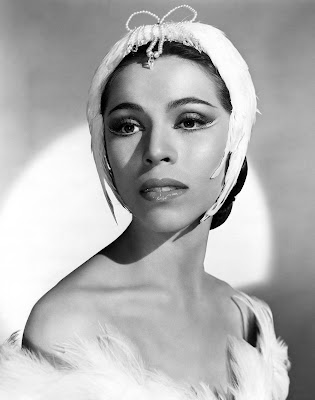
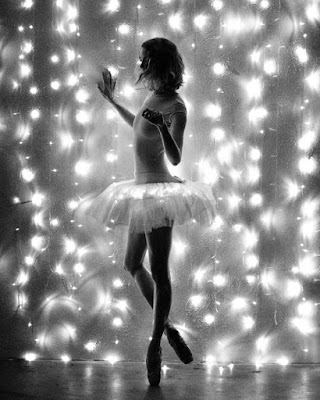

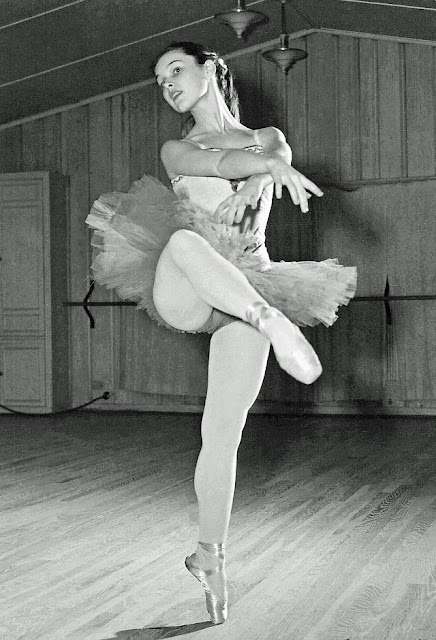

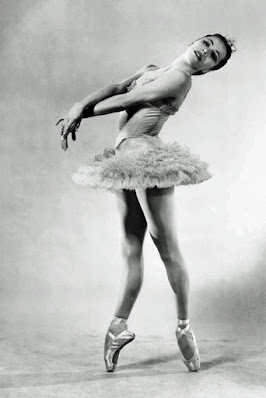
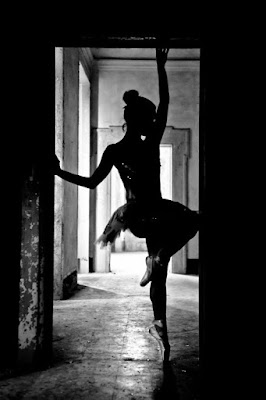
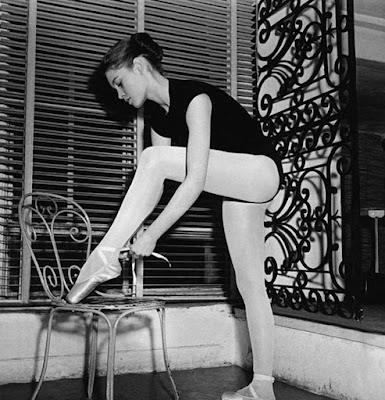



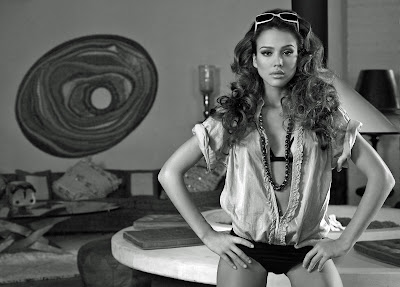
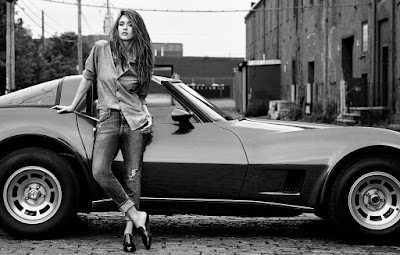
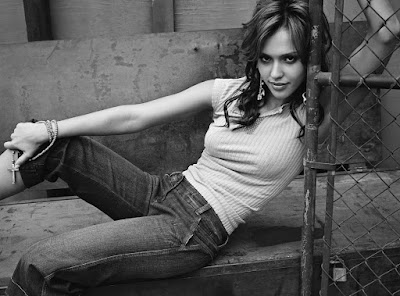



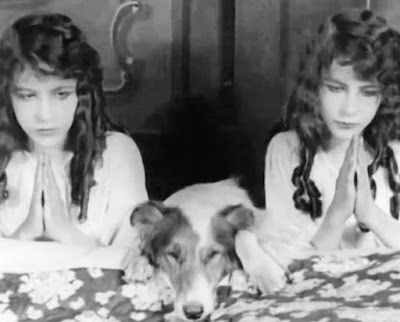
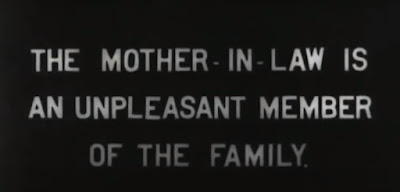
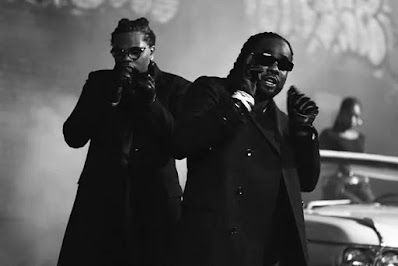
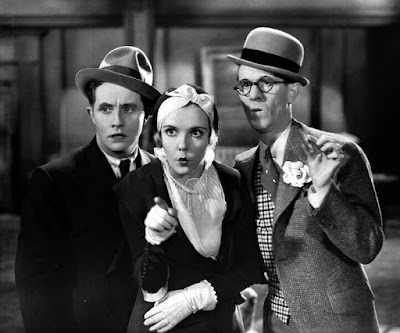
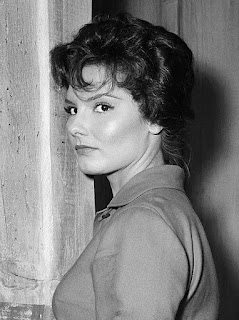
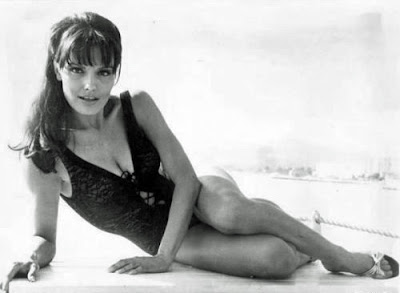
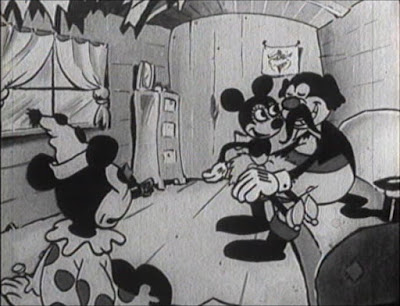



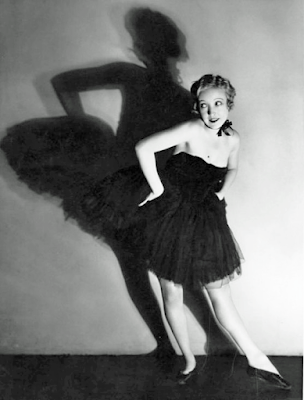



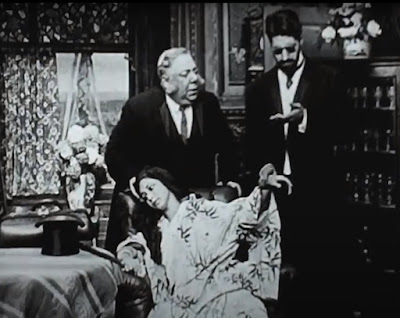
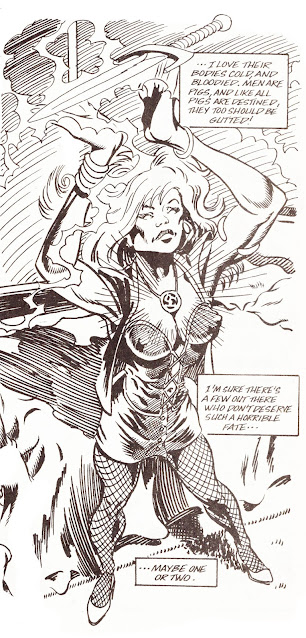

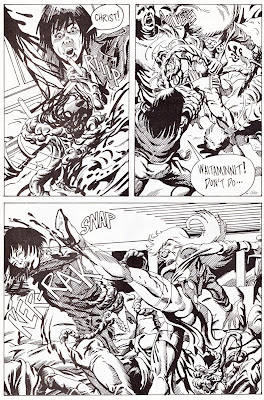
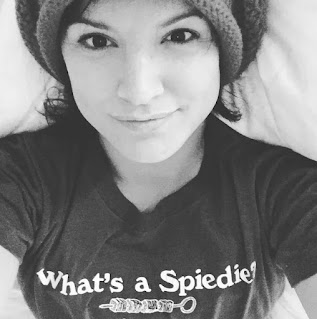

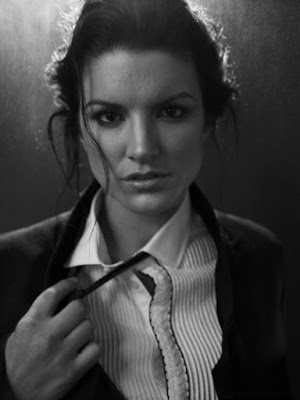
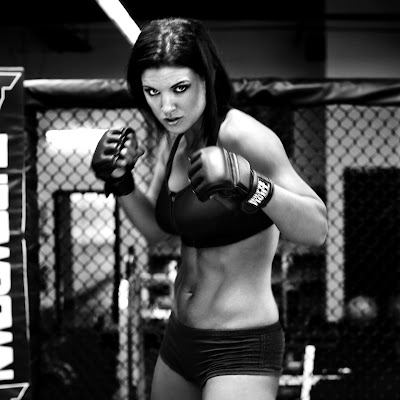



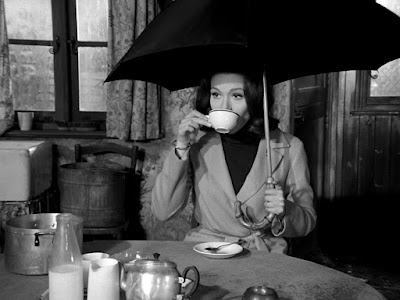








.jpg)













.jpg)
